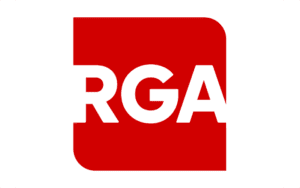How did the insurance sector buck M&A’s downward spin?

How did the insurance sector buck M&A’s downward spin? | Insurance Business Canada
Insurance News
How did the insurance sector buck M&A’s downward spin?
North American M&A has faced significant headwinds – but that didn’t stop dealmaking in insurance
Insurance News
By
Ryan Smith
The North American insurance underwriting sector bucked an overall downward trend in mergers and acquisitions last year.
While the level of deal activity among insurers inched down 2% last year (96 transactions compared to 98 in 2022), the aggregate transaction value shot up 16.8%, from $13.89 billion in 2022 to $16.23 billion in 2023, according to an analysis by S&P Global Market Intelligence.
In contrast, North American M&A activity across all industries tumbled last year, with the number of transactions plummeting 23.7% and total transaction value falling 15.3%, S&P reported.
Dorree Ebner, technology and innovation leader for EY Americas Strategy and Transactions, told Insurance Business that there were multiple drivers behind the M&A drop.
“Multiple geopolitical and macroeconomic trends – inflation, interest rates, regulatory factors, supply chain disruptions – created widespread uncertainty for M&A in 2023,” Ebner said.
Ebner said that a recent EY Economic Outlook predicted that the US economy was set to enter a “transition phase marked by softer growth, lower inflation and declining interest rates.”
“This sets the stage for what I believe is a pivotal inflection point in the M&A market,” Ebner said. “There are undoubtedly macroeconomic headwinds, but also opportunities as both corporates and private equity restructure their portfolios and position themselves for growth, anticipating an improved economic outlook through 2024 and beyond.”
This prediction seems to be supported by recent data from Marsh, which reported 2023 as its third-busiest year on record for transactional risk insurance despite the downward M&A trend.
Insurance M&A drivers
So why did the insurance sector so decisively outperform other industries’ M&A activity last year?
“M&A activity in the insurance sector through 2023 and continuing into 2024 is driven by a number of factors – pursuit of growth, specialization, and private equity’s focus on the market – especially on the broader insurance value chain such as distribution and back-office technology,” Ebner told Insurance Business. “Already, in the first couple of months of 2024, we have seen a multibillion-dollar deal by private equity on the distribution side, and, with the economic outlook improving, the stage is set for an active year for M&A in the sector.”
The largest deal in 2023 was Brookfield Reinsurance’s planned $3.59 billion acquisition of American Equity Investment Life Holding Co., according to S&P. Other mega deals included KKR & Co.’s $2.7 billion stake acquisition of Global Atlantic Financial Group and S.USA Life Insurance’s pending $1.91 billion swoop for National Western Life Group.
Ebner expected the insurance sector to keep the pace in 2024.
“The insurance sector’s resiliency against the broader M&A headwinds has been supported by a continued focus by the industry on creating stronger and more capital-efficient businesses focused on strengthening core underwriting capabilities, divesting non-core businesses, innovative use of alternative capital, convergence with alternative asset management and private equity’s attraction to a sector that has lower correlation with the broader macroeconomic environment,” she said.
Ebner also shared her forecast for M&A deal drivers in 2024:
Life insurance
“Deal activity is expected to increase in 2024 as the industry continues to sell off legacy long-duration blocks and allows for new product innovation and sales,” she said. “The increased demand for these assets and the formation of run-off platforms that have been primarily backed by alternative asset managers is driving competition for assets which are needed to effectively scale their platforms.”
P&C
Ebner said that P&C faced “significant headwinds in prior years (inflation, extreme weather events), but we are now seeing signs of a shift towards growth opportunities and a continued hard rate market with increased reinsurance capacity (inorganic and organic).” She said there was potential for growth in sales of embedded insurance over the next few years.
“Multi-line insurers should continue looking to rebalance their portfolios and offload non-core businesses,” Ebner said.
Brokerage
“Financial buyers continue to be highly active in the space, and are expected to play a significant role in increased activity throughout 2024,” Ebner said.
MGAs/MGUs
Carriers with cyber programs are struggling to adequately price their exposures – which may lead to increased M&A activity from carriers looking to exit the space and specialized insurers and MGAs/MGUs, especially ones with a track record of profitable underwriting, looking to expand their market share,” Ebner said.
Have something to say about this story? Let us know in the comments below.
Related Stories
Keep up with the latest news and events
Join our mailing list, it’s free!






